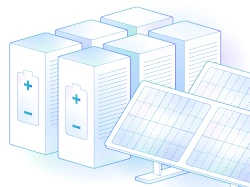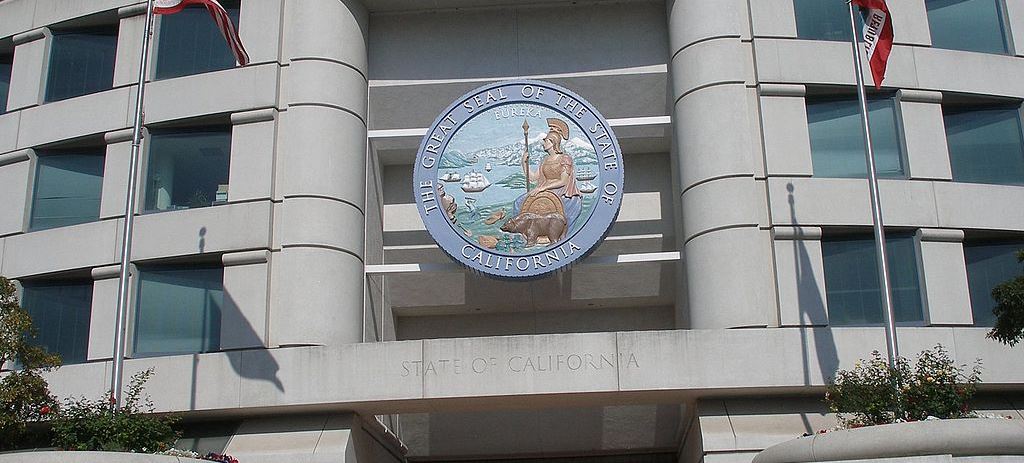It’s no secret that the recent updates to one of the most lucrative and successful distributed energy programs in the country, the Self-Generation Incentive Program, have been a cause for confusion for many. Since the passing of Senate Bill 700 and the California Public Utilities Commission’s (CPUC) finalized plan for the incentives, we’ve been trying to decode who qualifies for these incentives and what they mean for projects moving forward. We recently hosted a webinar with Station A, which is a complimentary SaaS platform to Energy Toolbase that provides clean energy recommendations for more than one million buildings across the country. More specifically, they are able to identify buildings that will fall under these new Equity Resiliency incentives. This webinar covered everything that led up to these new incentives, how to qualify and how to identify and model projects. You can view the webinar recording here:
Since 2001, the SGIP program has been a pillar in the growth of distributed energy technologies across the state and essential in the growth of solar and energy storage projects. As a program that was initially designed as a peak-load reduction program, the main focus of the program today is to reduce greenhouse gas emissions through a variety of technologies, a big one being energy storage. Senate Bill 700 (SB700), which passed in 2018, gave the program a much-needed boost. It extended the program until 2025 and provided an extra $800 million in funding for renewable projects. Much of that budget will be going towards energy storage technologies and the Equity Resiliency budget.
Equity Resiliency Budget gets a major boost in funding
The CPUC’s initial budget allocation plan stated that the Equity Resiliency budget would receive $100 million in funding. This program was created following the deadly and destructive wildfires that plagued California, forcing several Public Safety Power Shutoffs (PSPS). It provides incentives for low-income customers living in High Fire threat Districts (HFTD). The final budget ended up with an Equity Resiliency budget allocation of $513 million for qualifying residential and non-residential projects, which was unprecedented and unexpected.
The Equity Budget, which was created for low-income customers in 2016, received $24 million. Large-scale projects (greater than 10-kilowatt hours (kWh)) were awarded $81 million. Unfortunately, small residential hardly got the assistance it needed, with only $57 million allocated and a $3 million carryover. When the last step opened in 2019 for small residential projects, the money was used up just weeks after the application window opened and everything has been waitlisted since mid-last year. According to the updated 2020 SGIP handbook, if the small-residential budget runs out, program administrators can use funds from the large-scale storage category, if applicable, to fund residential projects as they are submitted. Overall, not a ton of money was allocated to the general market budget (large scale and small residential) outside the Equity and Equity Resiliency budgets. Many developers are eager to start modeling and using these incentives. Determining who qualifies will be the tricky part, as there are many nuances to the eligibility requirements, more particularly for the Equity Resiliency budget. We’ve listed the residential and non-residential requirements below for the Equity Resiliency budget. You can also utilize Station A’s platform to help guide you to determine Equity Resiliency eligibility and seek out new opportunities. You can read their latest blog on unlocking SGIP using Station A.
Equity Resiliency Budget eligibility requirements – Residential
- In Tier 2 or 3 HFTD
- Experienced two or more PSPS events
- Eligible for the Equity Budget
- On a medical baseline rate due to dependence on life-support devices
- Depends on electric pump wells for water supply
Equity Resiliency Budget eligibility requirements – Non-residential
- Buildings that are deemed as “critical facilities”
- Are in, or serve at least one low-income area in Tier 2 or 3 HFTD
- Experienced two or more PSPS events
- Police & fire stations, emergency response providers or operations centers, 911 call centers
- Hospitals, skilled nursing facilities, nursing homes, health care facilities, blood banks, dialysis centers, hospice or independent living centers
- Public & private electric, water, gas wastewater or flood control facilities
- Buildings/locations that provide assistance during power outages
- Jails/prisons
- Small business grocery stores
Public Safety Power Shutoffs (PSPS)
Much of the influence for the Equity Resiliency budget was the increase in Public Safety Power Shutoff’s that plagued the Pacific Gas & Electric (PG&E) territory, leading to more than 3 million people losing electricity. These events, also knowns as De-energization, are means of preventing wildfires and have been in place for more than a decade. In 2007, a disastrous wildfire in Southern California led San Diego Gas & Electric (SDG&E) to develop the plan that included De-energization. Since, it’s been used intermittently, mainly in more rural areas of SoCal. Throughout the past 5 years, wildfires have continued to get more intense and dangerous. 2017 and 2018 were the worst wildfire seasons on record, which forced utilities to make the decision to heavily rely on PSPS events to help mitigate these dangers.
These De-energization events are intended to help diffuse wildfires sparking, but this form of prevention can also be dangerous and cause issues in itself. Public safety concerns arise during these events including loss of power to critical facilities, loss of telecommunications and home medical equipment to name a few. In an effort to ensure these De-energization events are done properly, the CPUC has created guidelines and is continuing to improve them to ensure safety and efficiency.
Overall, with these events looming and becoming more frequent, it’s clear that you’ll have to have some sort of source for backup power for your home or business which could lead to an increase in demand for home storage. This has been the CPUC’s driving force behind some of the changes to the SGIP program we’ve seen and the inclusion of the Equity Resiliency budget.
New SGIP incentives are live in Energy Toolbase
Energy Toolbase has always been a platform used for running the full financial model of projects, building proposals and incorporating state and nationwide incentives. The global, dynamic Equity Resiliency ($1,000/kWh) and Equity budget ($850/kWh) incentives for the SGIP program are now live in the platform for users to incorporate into project proposals and savings analysis. You will see that all of our old SGIP incentives are archived and you can now rely on the updated, dynamic SGIP incentives, including Equity Resiliency. The Energy Toolbase team has spent a lot of time working on and perfecting these incentives to make them as accurate as possible for our users and their projects.
You can watch a demo of a residential and non-residential case study using the Equity Resiliency incentive from the webinar.
Be mindful of SGIP changes
A big change to be mindful of is the updated greenhouse gas (GHG) reduction requirements. In August of 2019, the CPUC released additional program rules which require energy storage systems receiving SGIP incentives to reduce GHG emissions. New program rules for commercial customers include:
- Commercial customers must dispatch their energy storage systems to ensure the system reduces at least 5kg/kWh per system
- If system does not meet those requirements, the customer will lose a portion of their performance-based incentives (PBI) at rate of $1/kg ($1,000/ton)
- The penalty will not exceed the PBI amount for a given year
- If a developers fleet repeatedly increase GHG, they face program suspension
The updated program rules also state that small residential customers (10 kW or less) are required to reduce GHG emissions but will be required to comply at a developer fleet level. If the entire fleet increases emissions as a whole, they could also face suspension from the program.
It’s also important for any developer applying for these projects to be mindful of the cost cap and not overpricing your systems. The SGIP handbook language explicitly states that the entire sum of your incentives for a project (SGIP and Investment Tax Credit (ITC) combined), cannot exceed the total installed energy storage project cost. Again, cost cap logic is already built into Energy Toolbase. The guidebook says when it comes to pricing a system, that developers cannot sell a residential system that receives incentives for more than the price that they would sell a comparable system that wouldn’t qualify for the SGIP incentives.
The point we’re trying to make is that these new incentives are a lot to wrap your head around. While there are tools like Station A that have laid the groundwork on determining who qualifies, you are responsible for doing your homework and checking all the boxes on qualifications. Energy Toolbase has always been transparent with our incentives and updating them in our incentive database. These changes to the incentive program are going to be critical in growing the energy storage market throughout the state, but wrapping our heads around all of it is first on the to-do list.
If you have any questions on modeling with these new incentives, contact your Energy Toolbase account manager or sign up for our 14-day free trial. You can access Station A’s SGIP calculator here.
Helpful links from the webinar:

